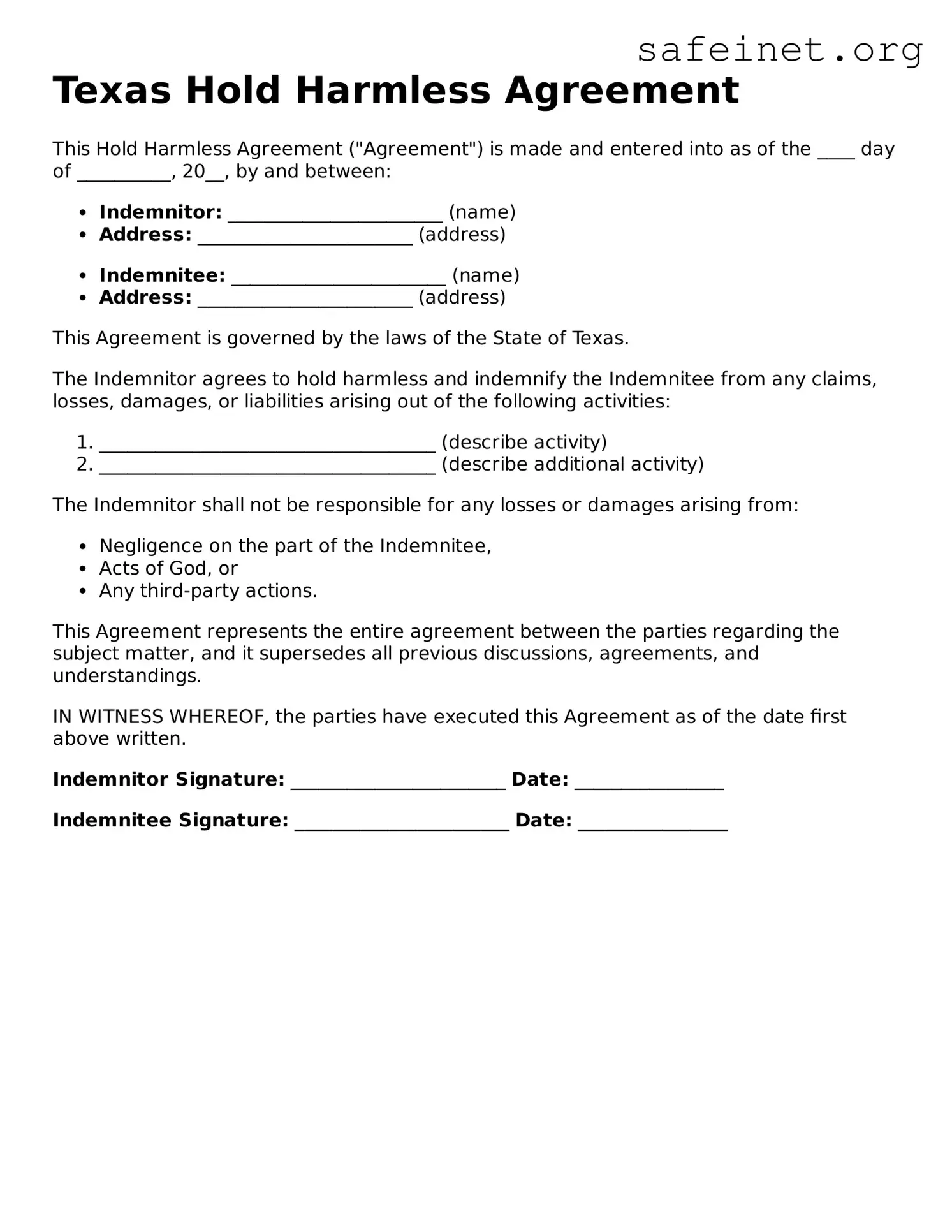Valid Hold Harmless Agreement Template for the State of Texas
A Texas Hold Harmless Agreement is a legal document designed to protect one party from liability for certain actions or incidents that may occur during a specific activity or event. By signing this agreement, individuals or organizations acknowledge the risks involved and agree not to hold the other party responsible for any resulting injury or damage. Understanding the importance of this form can help mitigate potential legal issues, ensuring a smoother experience for all parties involved.
Take action today and fill out the Hold Harmless Agreement form by clicking the button below.
